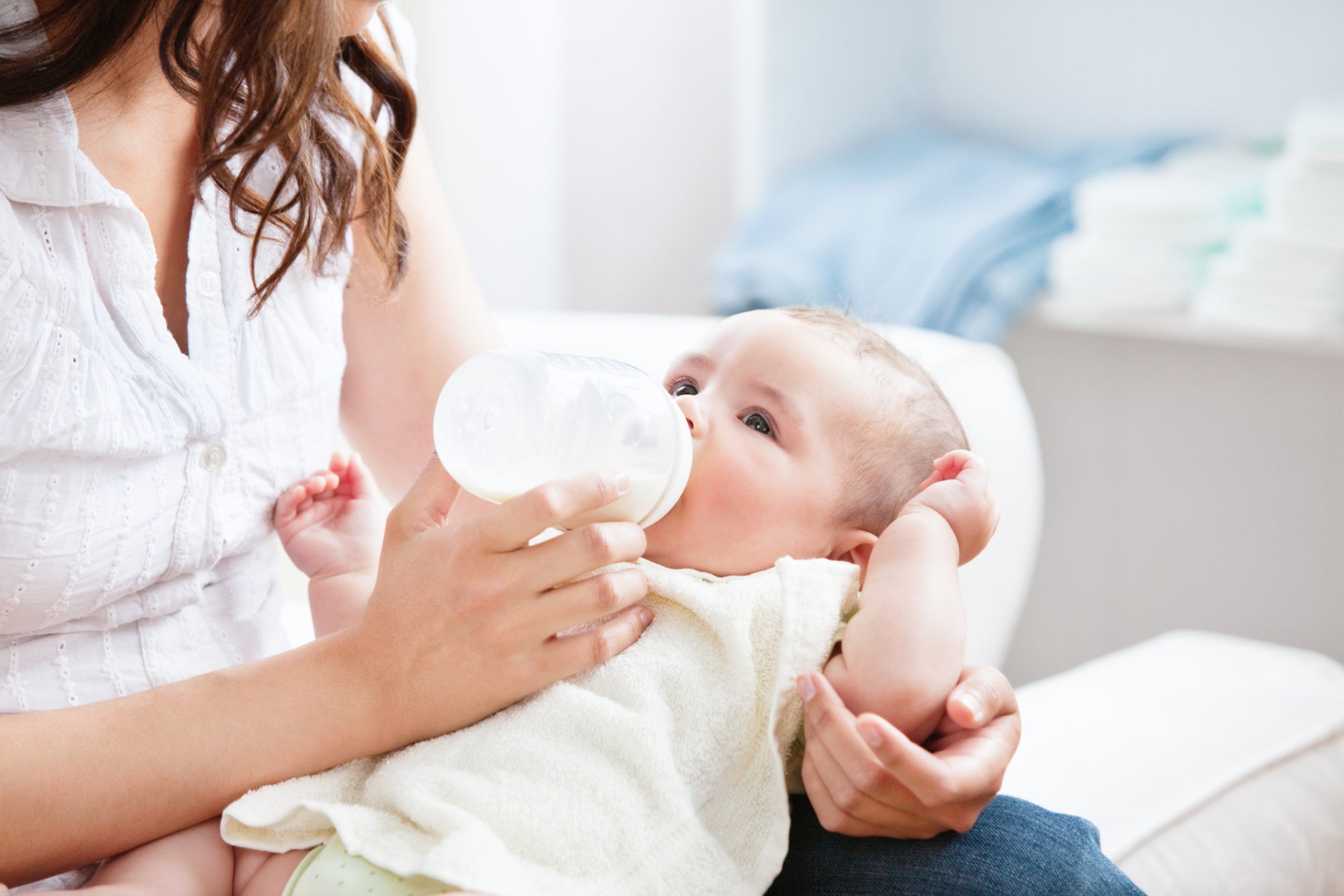When the time comes to start bottlefeeding your baby, there are a few tips that will help make the process goo smoothly. We’ve talked to Tracey Lattimore to get some advice for mums looking for advice on bottlefeeding their babies.
Kit yourself out
Make sure that you have the right bits of kit for expressed breast milk or bottle-feeding from the outset. As a rough guide, you’ll need six bottles, six teats, powdered or ready-made formula milk, sterilising equipment and a bottle brush. A muslin cloth is also handy to mop up spills while feeding and winding.
Find the right formula
There are lots of varieties of formula to choose from, and all brands are fairly similar. However, make sure you choose the right type for your baby’s age. First milks are suitable from birth, while follow-on milks, which have added vitamins and minerals, are only suitable for babies from six months old. Milk for ‘hungrier babies’ has a special balance of milk protein for when it’s too early for weaning – this is aimed at satisfying hungrier babies.
Choose a suitable teat
Teats vary by flow rate. For newborns, the teat may have just one or two holes in the top to make the milk come out slower. As your baby grows and demands faster-flowing milk, you should swap to a teat with more holes in the top. They are made of either latex or silicone, while anti-colic teats can help by reducing the amount of air that your little one takes in with her feed.
Prepare the correct amount of feed
If you’re using powdered formula milk, make up the bottle exactly according to the instructions on the box and use the right quantity. This will vary depending on your baby’s age and weight, as will the number of feeds you give her during the day and night.
Make sure bottles and teats are sterilised
It’s really important to sterilise bottles and teats until your baby is 12 months, as milk bacteria in your feeding equipment could make your baby ill. Choose from a steam steriliser that sits on your worktop, a microwave version (which is a bit quicker), cold water sterilising tablets, or sterilising by boiling in a pan of hot water. Always wash your bottles and teats first using hot, soapy water and a bottle brush, then rinse and sterilise.
Keep your baby upright
Try to hold your baby close to you, but make sure she’s fairly upright so that she can swallow comfortably and breathe during her feed. Support her head well at the same time. Never lie her down while feeding as this increases her risk of ear infections, as well as tooth decay once her teeth come through. Keep the teat full of milk too – this helps prevent your baby taking in air during her feed. If it becomes slightly flattened, put your finger in the corner of her mouth to release the vacuum.
Try not to overfeed
It’s easy to think that your little one must finish her bottle, but let her decide how much she wants. She’ll probably take slightly different amounts at each feed, so don’t force her to finish. After all, breastfeeding mums can’t really tell how much milk their baby is drinking; the baby simply stops once she’s full.
Wind your baby
Bottle-fed babies tend to take in more air than breastfed babies so, during and after a feed, sit her upright and gently rub or pat her back to bring up any wind.
Throw away any unused milk
Never store unused formula or breast milk after a feed – it’s not safe for your baby to drink.
Get dad to help out
“If you’re feeding expressed breast milk, it can help to get someone else to feed the baby,” says Sioned Hilton, Medela UK education and lactation consultant. “If mum is feeding, the baby will naturally search out for the breast.”
maternity & infant
Originally posted 2014-04-10 09:02:10.









